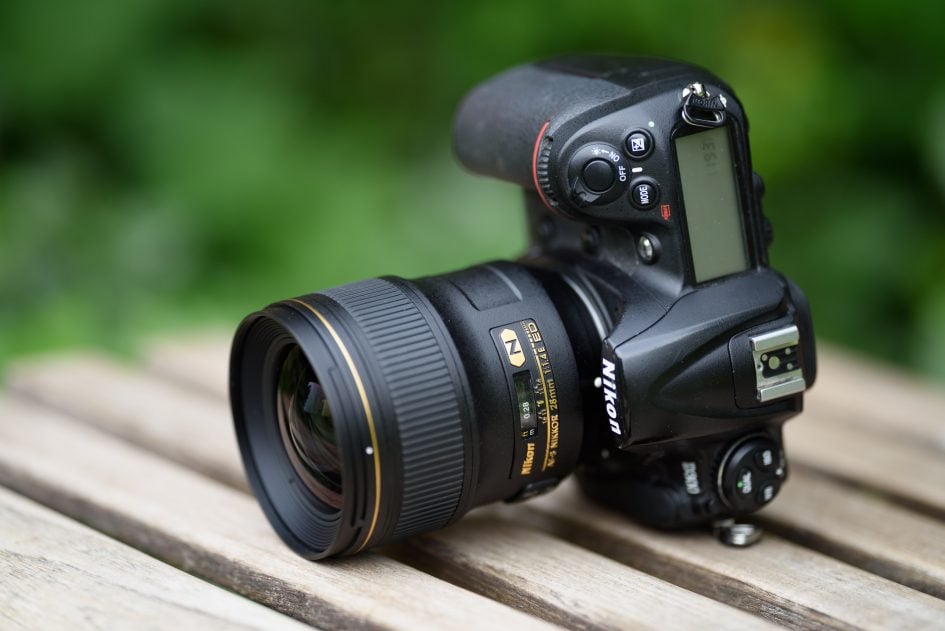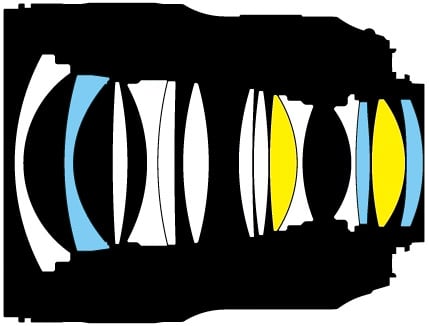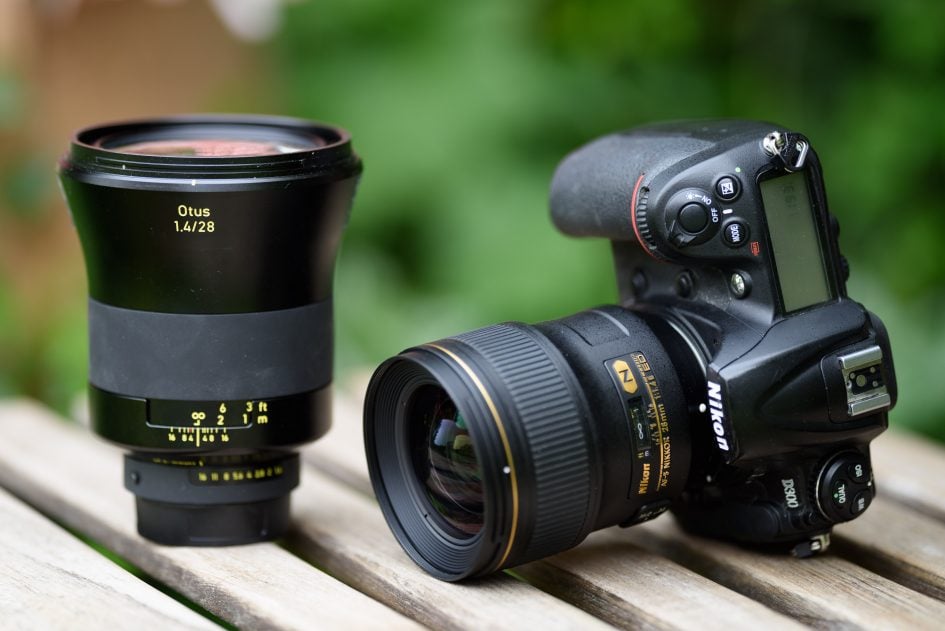Nikon 28mm f1.4E review
Summary
 Nikon's new 28mm f1.4 lens performs better than its 24mm and 35mm f1.4 siblings. IT may show off both Battle of Magenta haloing/loCA and one could wish for a fitter resolution of fine inside information at the border of the DX image-roundabout. But this is lilliputian on a very high level. The lens produces first-class resolution of fine detail in the center, has a pretty soft Bokeh for a wide-angle lens and is resistant against burn up and glare. Add a quite and reliable focus, a good hardening against the elements and a fair size of it and weight and you get a software packag that clearly earns a Highly Recommended. So the new Nikon 28/1.4E is well valuable its damage.
Nikon's new 28mm f1.4 lens performs better than its 24mm and 35mm f1.4 siblings. IT may show off both Battle of Magenta haloing/loCA and one could wish for a fitter resolution of fine inside information at the border of the DX image-roundabout. But this is lilliputian on a very high level. The lens produces first-class resolution of fine detail in the center, has a pretty soft Bokeh for a wide-angle lens and is resistant against burn up and glare. Add a quite and reliable focus, a good hardening against the elements and a fair size of it and weight and you get a software packag that clearly earns a Highly Recommended. So the new Nikon 28/1.4E is well valuable its damage.
Buy information technology like a sho!
Check prices on the Nikon 28mm f1.4E at Virago, B&H, Adorama, or Wex. Or els commence yourself a re-create of my In Camera book or cover me to a coffee! Thanks!
Nikon 28mm f1.4E retrospect -
- Written by
Deep
The Nikon 28mm f1.4E ED is a medium fisheye lens designed for bodies with full-frame sensors. Announced in April 2017, it fills a gap in Nikon's extensive lineup which previously only offered wider and yearner 24mm and 35mm options with bright f1.4 focal ratios. Nikon's equipped its new 28mm genus Lens with an electromagnetic diaphragm mechanism, nano crystal coat plus fluorine coating on the front and set up lens elements for easier cleaning, and besides toughened the lens barrel with additional waterproofing against detritus and moisture. This makes the gold-ringed lens fit Nikon's line-functioning of occupation lenses and they charge accordingly: 2000 USD / 2400 EUR is the list-price for this new lens.
To find out how the parvenu Nikon 28mm f1.4E Male erecticle dysfunction performs I tested it against the Otus 28/1.4 from Zeiss.

Facts from the catalog
A usual I'll have a view the technical data first. I've rated the features with a [+] (or [++]), when it's better than middling operating theater even state of the art, a [0] if it's standard or just average, and [-] if there's a disadvantage. I'll compare it mostly with the Otus 28/1.4 from Zeiss ("Otus" for deficient).
Size (diameter. x distance): 83 x 101mm (3.3 x 4.0in) without Lens hood. This is large just not overly so. The lens hood adds another 38mm in distance and has a diameter of 99mm. The Otus is much larger at 109 x 127mm addition 41mm for the lens hood. [0]
Weight: 645g (22.8oz.) plus 29g for the impressionable lens hood. The Otus weighs double that at 1310g + 62g for the metal lens toughie. [0]

Optics: 14 elements in 11 groups which is a bit simpler than the 16/13 of the Otus. The new lens has two (extra) low dispersion and trio aspherical elements. Nano coating should reduce flair and ghosting and atomic number coating on the front and rear lens elements "actively repels water, disperse, and dirt" and should wee-wee for easier cleaning. [+]
Nearest focus distance/max. magnification: 0.28m (0.92ft) / 1:5.9 similar to the 0.29m (0.95ft) / 1:5.5 of the Otus. With manual focus I was competent to get a bit better blowup of 1:5.4 on the new Nikon. That's not much just about acceptable in this lens-socio-economic class. You only have 12cm of working distance (with Lens hood unconcerned). A magnification of 1:10 is achieved at around 0.42m distance with 26cm working length. [0]
Permeate-string: 77mm, the widely used professional classic. The Otus needs 95mm filters. [+]
Image Stabilization: No, same with the Otus. [0]
Motorcar Focus: HSM (Hyper Hearable Centrifugal), so it also works on camera bodies which don't have an AF-driving force made-up in like Nikon's D3x00/5×00. Manual-focus overthrow is by plainly turning the focusing ring. The Genus Otus is manual centerin only. [+]
Covers full framework/FX or smaller = very good. As does the Otus. [+]
Price: around 2000 USD / 2400 EUR (incl. 19% VAT), which is bad expensive. Nikon's 24/1.4G and 35/1.4G can be had for around 1800 EUR. But to put the monetary value of the unprecedented Nikon in view: The Otus currently sells at around 4500 EUR. [-]
Comes with a flexible lens pouch (no padding, no strap), the lens hoodlum is included, reversible for ship, and the electron lens-caps are standard Nikon's. The lens hoodlum throws a shadow at the bottom of the image when you use the onboard flash bulb of the D810. Without lens hood there is zero shadow. [0]
Outstrip data is relayed to the camera, so the Nikon body can do whol the advanced exposure-attendant stuff with this lens. The Otus cannot dress that. [+]
Aperture annulus: no. The Zeiss Genus Otus has one. [0]
Sealing: A rubber grommet at the lens-wax and more in the lens barrel. [+]
The score in the "features-department" is 1[-]/6[0]/6[+]. This is pretty good with the cost the simply true down-side.
Alternatives
- There is only ace past 28mm f1.4 lens available for Nikon (and Canon) users: The 28/1.4 Otus from Zeiss. It is an fantabulous lens but even larger, heavier, and more expensive than the Nikon. And IT has one major drawback: it's manual focus only! The lens earned a Extremely Recommended in my Zeiss 28/1.4 Otus retrospect for its outstanding sensory receptor performance.
- Nikon has the 28/1.8G as a smaller, flatboat, and at 650 EUR much cheaper alternative. For that price you lose two thirds of a stop in central ratio. See my Nikon 28/1.8G review where the lense got a recommendation.
- Other than that you either have to flavor for a 24/1.4 or a 35/1.4 lens. Both lens types are connected offer from Nikon or Sigma amongst others. Regard my Nikon 24/1.4G review, Nikon 35/1.4G review, Sigma 24/1.4 Art review, Sigma 35/1.4 Art reexaminatio.

Above: Zeiss 28/1.4 Otus (left), Nikon 28/1.4E (letter-perfect)
Focus
Focus accuracy and repeatability is critical to consistently produce file-like shots. Repeatability (the accuracy of revolve around the same subject aft recurrent focus-acquisition) of this lens is precise good (measured 98.9% in Reikan FoCal) with no outliers over a series of 40 shots under strictly controlled test conditions. And at that place is only a small performance variation whether the lense focuses from eternity OR from a closer distance. At f1.4 the lens requires some exact focus fine-tuning in photographic camera particularly at a distance around 1m where depth of field of battle is sporting a few cm. Even 3 points of fine-tuning (along a musical scale from -20 to +20) can make the difference between hit or overlook at f1.4. Indeed better take the time to adjust the AF of your photographic camera accordingly.
The lens focuses with no hunting in around 0.6 Securities and Exchange Commission from infinity to 0.4m, which is fasting. The focus ring has no slack/play between its movement and the focus-action and a throw of 135 degrees which is nifty for manual concentre wide open. Its rubberized surface is 21mm wide and can be turned with one finger although information technology moves not as easy as from the Nikon 35/1.4G or 24/1.4G.
AF-operation is very quiet from the outside, and if you record video with the built-in microphone the AF-cause produces a slight hiss and only faint clicks at the take up operating theatre stop of focus-movements.
As you pull focus, you'll notice some focus breathing: the image becomes more magnified at closer focal point distances. When I adjusted the focus from infinity to 0.40m, I rhythmical a 4% increase in magnification which is pretty low and should not evidence likewise distracting when shooting telecasting.
Pages: 1 2 3 4
Nikon 28mm f1.4E review
Source: https://www.cameralabs.com/nikon-28mm-f1-4e-review/
Posting Komentar untuk "Nikon 28mm f1.4E review"